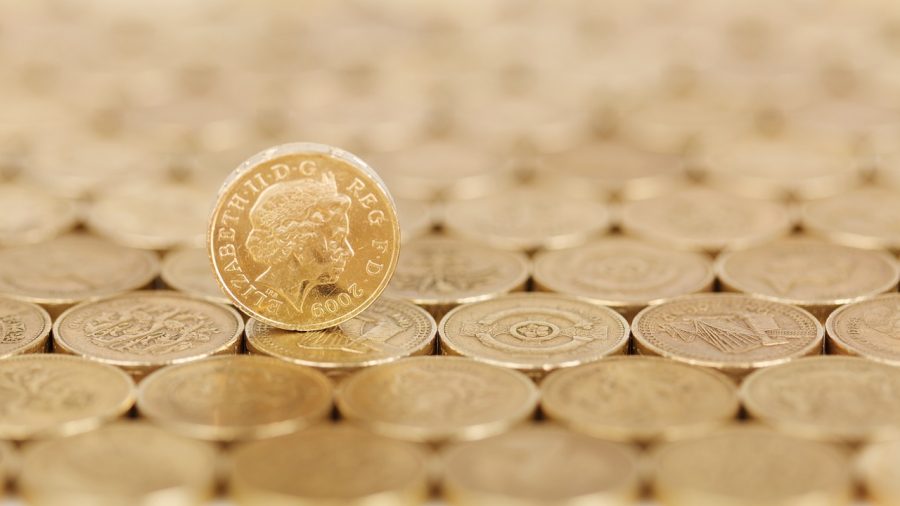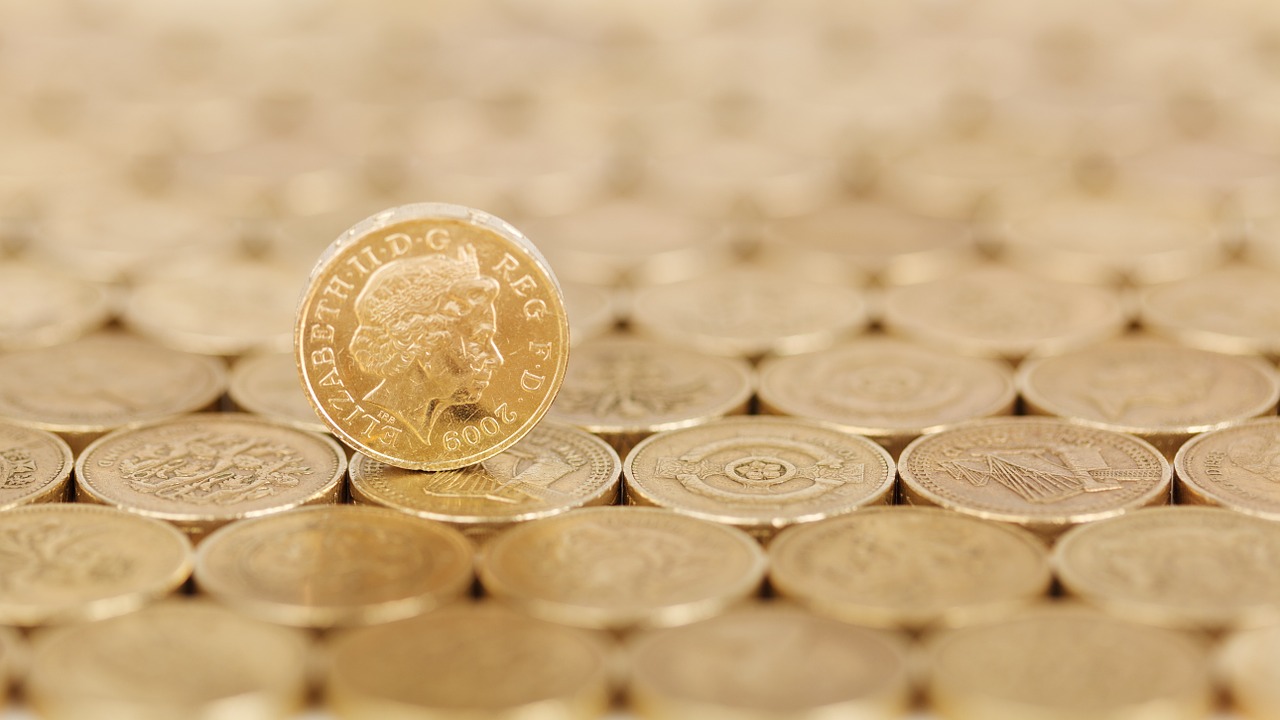
Pound is set for 6 month high after central bank rate decisions
Reuters: The pound is set for its biggest weekly rise in six months on Friday after days of economic data and central bank rate decisions, and ahead of the Bank of England’s monetary policy meeting this week. BRITISH POUND IS SET FOR 6 MONTH HIGH At 0900 GMT, the pound was at $1.279, up less […]

Reuters: The pound is set for its biggest weekly rise in six months on Friday after days of economic data and central bank rate decisions, and ahead of the Bank of England’s monetary policy meeting this week.
BRITISH POUND IS SET FOR 6 MONTH HIGH
At 0900 GMT, the pound was at $1.279, up less than 0.1% against the dollar at around its highest level since April. It was up 1.72% since Monday, the biggest weekly increase since early December. Analysts said a range of factors have boosted the pound against the dollar last week, including data which showed British wages rising far quicker than expected, raising investors’ expectations that the Bank of England will have to hike interest rates further. “Tuesday’s labour market data led Bank rate expectations to spend much of that evening flirting with a terminal (peak) rate closer to 6%,” said Nicholas Rees, FX market analyst at Monex Europe.
ALSO READ: Who is the richest person in the world today? Top 10 list – 19 June 2023
The BoE’s main rate currently stands at 4.5%, and on Friday traders expected it to rise to around 5.75% by the start of next year, according to pricing in derivatives markets. “Markets have in our view become more comfortable with the idea of a higher terminal rate,” Rees said. “This shift has provided modest support for sterling over the course of the week.” He said U.S. economic data released on Thursday, which showed weekly jobless claims were higher than expected last week, also helped boost sterling by weighing on the dollar. Against the euro , sterling was roughly flat at 85.6 pence. The euro was up 0.2% against the pound for the week, after the European Central Bank signalled further interest rate hikes are likely, as it raised borrowing costs to the highest level in over two decades on Thursday.
The Bank of Japan remained an outlier on Friday to its global counterparts as it continued to pursue a different course, keeping its ultra-loose monetary policy in place. Sterling rose to its highest level against the yen in eight years following the BoJ’s announcement, at 180.83 yen to the pound. On Thursday this week, the Bank of England is expected to be in lockstep with the ECB, with the market eyeing the chances of a hike of 25 basis points at 88% and 50 basis points at 12%. The BoE decision comes after the U.S. Federal Reserve also signalled that it could resume tightening its monetary policy after holding rates steady in 5.00% to 5.25% range on Wednesday. “Investors are sceptical that these central banks can keep hiking interest rates, I think the Bank of England is the exception, because they’re backed into a corner with just uniquely problematic inflation outlook,” Ben Laidler, global markets strategist at eToro, said.
ALSO READ: Newspaper front pages from around the world, 19 June 2023
As Britain’s households brace for the effects of more rate hikes, one of the country’s largest mortgage lenders, Nationwide Building Society, said it will increase its fixed rates on home loans offered via brokers. In recent weeks, mortgage rates have risen in Britain, propelled by expectations of more BoE hikes.
US DOLLAR
Reuters: The U.S. dollar was tentative on Monday as investors tried to assess the monetary policy path ahead after a raft of central bank meetings last week, while the yen was fragile in the wake of the Bank of Japan sticking to its ultra-easy policy. The dollar index, which measures the U.S. currency against six major rivals, rose 0.049% to 102.33, not far from a one-month low of 102 it touched on Friday. U.S. markets are closed on Monday for a holiday. In an action-packed week of central bank decisions, the Federal Reserve left interest rates unchanged on Wednesday but hinted that further hikes were on the way to tame inflation. The European Central Bank raised interest rates by 25 basis points on Thursday and left the door open to more hikes, with the Bank of Japan rounding off the week by standing pat on its ultra-easy policy. “The Fed’s hawkish hold means that the bar to a hike next month is low,” said Marc Chandler, chief market strategist at Bannockburn Forex in New York.
ALSO READ: Looming Gautrain strike: Here’s what workers are demanding
Investors, though, expect the central bank to be done with its tightening in July. Markets are pricing in a 72% probability of the Fed hiking by 25 basis points next month, CME FedWatch tool showed, and stopping after that. “The market, which had been pricing in cuts this year until late May still needs to be convinced that the Fed will in fact deliver two more hikes this year,” Chandler said. Investor focus this week will be on Fed Chair Jerome Powell’s testimony later this week to Congress. “Congressional testimony next week gives Chair Powell a second chance to push a more hawkish message,” Citi strategists said in a note on Friday. Fed officials have also struck a hawkish tone since the meeting.
Citi said sustained strength in the economy has raised optimism around a ‘soft landing’ where inflation falls without a recession. “However, persistently strong core inflation keeps us in the camp of those who think the most likely way inflation returns to target is through a significant downturn in growth.” As widely expected, the BOJ on Friday maintained its -0.1% short-term rate target and a 0% cap on the 10-year bond yield set under its yield curve control policy, pushing the yen broadly lower. “The BOJ believes Japan’s surge in inflation may not last without monetary policy staying loose,” said Mansoor Mohi-uddin, chief economist at Bank of Singapore. “We expect the BOJ will lift or end its 10Y yield cap in 2023 as inflation firms. But officials will keep the deposit rate negative to spur growth further.”
ALSO READ: Fuel price LATEST: Petrol, diesel data – good and bad news for July 2023
On Monday, the yen touched a near seven-month low of 141.98 per dollar, having slid 1% on Friday. The yen also touched a fresh 15-year low against the euro of 155.32. Meanwhile, the euro was up 0.01% to $1.0934, hovering near a one-month peak. Sterling was last at $1.2817, flat on the day. The Australian dollar fell 0.32% to $0.686, while the kiwi eased 0.26% to $0.622.
SOUTH AFRICAN RAND
Investec: Last week was another stellar week for the ZAR, making it one of the best-performing currencies in the world since the start of June. This makes for more pleasant reading than its performance for the year to May which had it amongst the worst performing, holding consequences for the inflation outlook. But the ZAR has surprised many by undoing most of the damage done in May and alleviating some of the pressures felt by the SARB in the lead up to the last decision.
ALSO READ: Top 3 richest South Africans in the world – 19 June 2023
It will not be enough to prevent the SARB from hiking further, although it does appear that the ZAR’s appreciation has played an important role in moderating rate hike expectations. At 07:18AM GMT the ZAR was trading at 18.2188 to the dollar.
GLOBAL MARKETS
Reuters: Asian shares started cautiously on Monday after their best weekly run in five months, as investors looked ahead to China’s rate decision and U.S. Federal Reserve Chair Jerome Powell’s testimonies for clues on the path ahead. Both S&P 500 futures and Nasdaq futures were mostly flat after Wall Street’s bullish run met resistance on Friday. Cash U.S. Treasuries were untraded due to the Juneteenth holiday, while futures were largely steady. In Asia, Japan’s Nikkei slipped 0.4%, having clinched a three-decade top on Friday, buoyed by the Bank of Japan’s leaving its ultra-easy policy setting unchanged, which sent the yen to a 7-month low against the U.S. dollar. MSCI’s broadest index of Asia-Pacific shares outside Japan fell 0.6%, after hitting a four-month high on Friday and finishing up 3% for the week, the best since January. China’s blue chips slipped 0.5% while Hong Kong’s Hang Seng index eased 0.6%.
ALSO READ: Ster-Kinekor to entice movie-goers to its cinemas
In China, hopes for more forceful stimulus are growing after the cabinet met on Friday to discuss measures to spur economic growth, but concerns remain whether they would be enough to revive a faltering economy. The People’s Bank of China is widely expected to cut its benchmark loan prime interest rates on Tuesday, following a similar reduction in medium-term policy loans last week. Morgan Stanley expects an imminent stimulus package, including the loosening of property buying restrictions in top tier cities, more infrastructure support and targeted consumption subsidies. “Given that 2Q GDP growth is tracking at 0%, a strong sequential growth re-acceleration will be needed for full-year GDP growth to reach the government target of “around 5%”,” said chief China economist Robin Xing. Several major banks last week cut their growth forecasts for China after the recent disappointing data.
U.S. Secretary of State Antony Blinken will wrap up his rare visit to China on Monday, with investors waiting to see if he would meet China’s President Xi Jinping, which would likely be read as a positive sign in the otherwise frothy relations between the world’s two biggest economies. After a week in which the stock market cheered the Fed’s decision to skip a rate hike in June, investors are also looking to a number of Fed speakers this week, with Powell set to deliver congressional testimonies on Wednesday and Thursday. Some officials have already sounded hawkish, and with the dot plot indicating two more hikes, markets are pricing in a 70% probability of the Fed hiking rates by a quarter point in July before holding steady for the remainder of the year. “Fed Chair Powell gives House and Senate testimony with focus on whether the July FOMC meeting is truly ‘live’, and if the Fed dot plot of two more hikes is a true base case depending on the data or more ‘aspirational’,” said Ray Attrill, head of foreign exchange strategy at National Australia Bank.
ALSO READ: Ramaphosa applauds African peace mission in Ukraine as “historic”
The Bank of England also meets on Thursday when it is set to raise interest rates by a quarter point to a 15-year high of 4.75%. Markets are betting on the British central bank’s rates rising to nearly 6% this year. The dollar index was little changed against major peers at 102.34 early on Monday, after falling 1.2% the previous week, the most in five months. The yen was undermined by a dovish BOJ , touching a seven-month low of 141.90 per dollar, while the hawkish the European Central Bank, which hiked rates by a quarter point last week, helped the euro hold near a five-week top at $1.094. Oil prices tumbled more than 1% on Monday. U.S. crude futures fell 1.0% to 71.03 per barrel, and Brent crude was down 1.3% at $75.63 per barrel. Gold prices were 0.1% lower at $1,955.77 per ounce.
